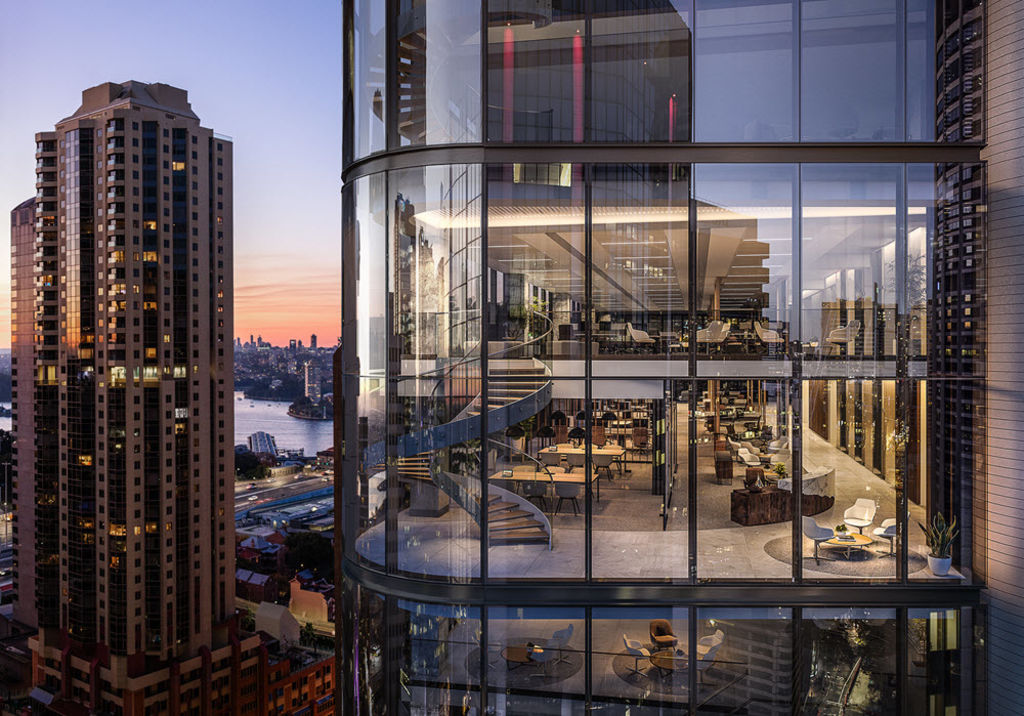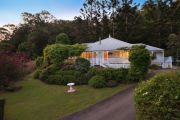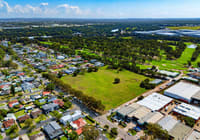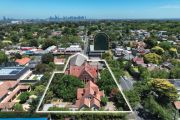
How wellness trends are affecting modern office design
Sponsored content
Gone are the days when office space meant grey partitions and bad fluorescent lighting.
Today the design of an office can be almost as big a drawcard as the business itself – especially as more employees seek work spaces that are conducive to good health.
While many companies have promoted staff wellness through discounted gym memberships, health funds and healthy cafe food, another option is to ensure the design of the workplace itself promotes wellbeing.
Libby Sander, assistant professor of organisational behaviour at Bond University’s Bond Business School, says there is a range of ways staff can be affected by poor workplace design, such as low lighting levels and noisy environments, the latter being one of the main ones that can result in high levels of stress and elevated heart rates.
“There are many studies that show things like the quality of air and lighting have a huge impact on the quality of our brain function and productivity,” she says.
“Often a lot of issues result from things that we can’t see. Poor oxygen levels, toxic gases from furniture and toxic chemicals are commonplace in modern workplaces and we don’t realise the effect these things have on our brains and our performance.”
While wellness programs have become popular within workplaces, Sander says simply giving employees a lot of information about their health and telling them what to do doesn’t work.
“Rather, companies should design the workplace itself to support wellness,” she says. “Sleep pods, air filtered by green walls and selectively placed health food are already realities in some workplaces.”
Sander adds that many organisations are now seeing the benefits of healthy office design, such as having stairs in the middle of the office rather than making staff use the fire stairs at the back.
“This encourages them to use the stairs more so they can get more exercise,” she says. “Adding plants are a simple fix companies can introduce that can reduce stress levels and filter the air. Even providing healthy food for employees not only gets them to eat better but also encourages them to interact more with their colleagues.”
Sander believes developers should be considering staff wellbeing more when designing offices.
“Staff wellbeing is becoming an important factor in office design,” she says. “There are changes coming through in building standards that address factors such as the amount of light, the provision of activity such as staircases and the quality of air.”
One new rating, the WELL rating, is catching on within the building industry. It is a performance-based system for measuring, certifying and monitoring features of the built environment that have an impact on health and wellbeing.
Matthew Francis, a research industry fellow at RMIT, says the WELL rating should be praised for pulling together research on human wellness and flourishing factors in office environments and giving it a form property developers can understand.
“However, it will be for individual businesses to see if the rating and implementation costs – and on-going costs of certification – can sustain the core premise that better employee wellness is better for profits in the long term,” he says. “My educated guess is that it is and that this rating will hopefully be the inspiration for the rest of the property industry to follow suit.”
Research indicates that millennials will judge their employers’ office facilities more critically than their older peers, Francis adds.
A new development at Sydney’s Circular Quay from developer Poly Australia is Poly Centre, which has a strong focus on wellness and sustainability.
Asset manager Velimir Kanazir says the organisation’s philosophy has always emphasised these two approaches.
“Like many of our other buildings, we want to create a workplace that encourages a healthy connection between work and life,” he says. “For example, Poly International Plaza in Beijing has been pre-certified for Leadership in Energy and Environmental Design (LEED) and is now pursuing gold certification in this category, and Poly Centre, which will have a five-star Green Star rating, is also being designed with employee wellbeing as a top priority.”
Kanazir says Poly Centre’s flexible design ensures the building has workspaces that are diverse and can be adapted according to changing needs.
“Poly Centre has been designed with unique floor plates that encourage movement and collaboration between staff,” he says. “The double-height windows maximise light and space and allow employees to better engage with their surroundings. There are also balconies to encourage staff to take a break and good use of natural light through these double-height windows.”
He adds the interactive floor plates allow larger tenants to expand and take multiple floors.
“Today’s office worker is demanding greater flexibility and our design is supporting these new ways of working,” he says.
Poly Australia wants to attract corporate tenants who put their employees’ well being first.
“Wellness initiatives are becoming more important within building design along with flexible workplaces,” Kanazir says.
This article is brought to you by Poly Centre.













